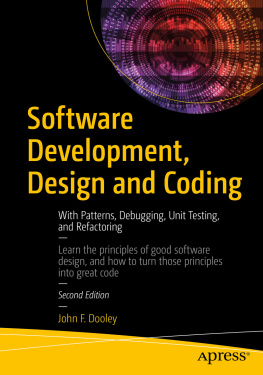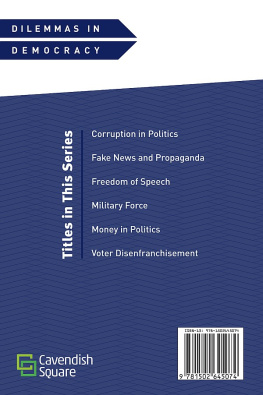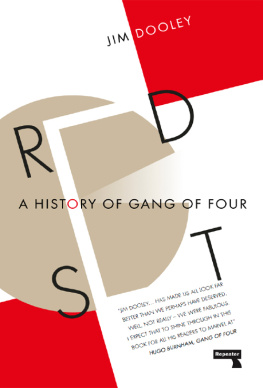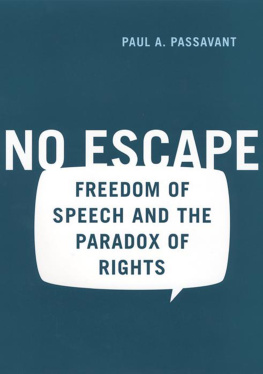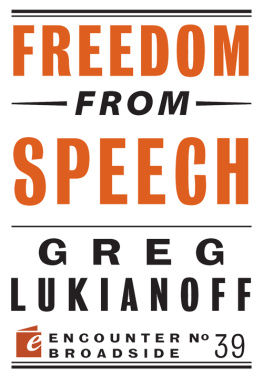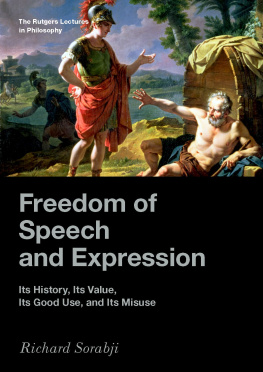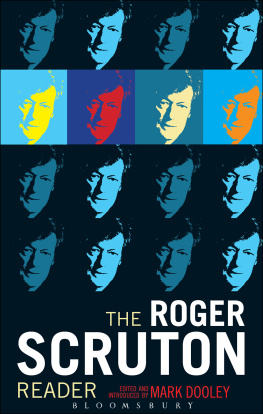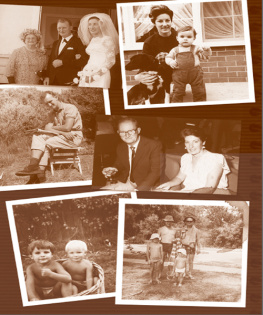Dooley - Freedom of speech: reflections in art and popular culture
Here you can read online Dooley - Freedom of speech: reflections in art and popular culture full text of the book (entire story) in english for free. Download pdf and epub, get meaning, cover and reviews about this ebook. City: Santa Barbara;California, year: 2017, publisher: Greenwood;An Imprint of ABC-CLIO;LLC, genre: Politics. Description of the work, (preface) as well as reviews are available. Best literature library LitArk.com created for fans of good reading and offers a wide selection of genres:
Romance novel
Science fiction
Adventure
Detective
Science
History
Home and family
Prose
Art
Politics
Computer
Non-fiction
Religion
Business
Children
Humor
Choose a favorite category and find really read worthwhile books. Enjoy immersion in the world of imagination, feel the emotions of the characters or learn something new for yourself, make an fascinating discovery.

- Book:Freedom of speech: reflections in art and popular culture
- Author:
- Publisher:Greenwood;An Imprint of ABC-CLIO;LLC
- Genre:
- Year:2017
- City:Santa Barbara;California
- Rating:3 / 5
- Favourites:Add to favourites
- Your mark:
- 60
- 1
- 2
- 3
- 4
- 5
Freedom of speech: reflections in art and popular culture: summary, description and annotation
We offer to read an annotation, description, summary or preface (depends on what the author of the book "Freedom of speech: reflections in art and popular culture" wrote himself). If you haven't found the necessary information about the book — write in the comments, we will try to find it.
Dooley: author's other books
Who wrote Freedom of speech: reflections in art and popular culture? Find out the surname, the name of the author of the book and a list of all author's works by series.
Freedom of speech: reflections in art and popular culture — read online for free the complete book (whole text) full work
Below is the text of the book, divided by pages. System saving the place of the last page read, allows you to conveniently read the book "Freedom of speech: reflections in art and popular culture" online for free, without having to search again every time where you left off. Put a bookmark, and you can go to the page where you finished reading at any time.
Font size:
Interval:
Bookmark:
Freedom of Speech
Reflections in Art and Popular Culture
Patricia L. Dooley
Issues through Pop Culture

Copyright 2017 by ABC-CLIO, LLC
All rights reserved. No part of this publication may be reproduced, stored in a retrieval system, or transmitted, in any form or by any means, electronic, mechanical, photocopying, recording, or otherwise, except for the inclusion of brief quotations in a review, without prior permission in writing from the publisher.
Library of Congress Cataloging-in-Publication Data
Names: Dooley, Patricia L., author.
Title: Freedom of speech : reflections in art and popular culture / Patricia L. Dooley.
Description: Santa Barbara, California : Greenwood, An Imprint of ABC-CLIO, LLC, 2017. | Series: Issues through pop culture | Includes bibliographical references and index.
Identifiers: LCCN 2016052189 | ISBN 9781440843396 (hard copy) | ISBN 9781440843402 (ebook)
Subjects: LCSH: Freedom of speechSocial aspects. | Popular culture.
Classification: LCC JC591 .D66 2017 | DDC 704.9/49323443dc23
LC record available at https://lccn.loc.gov/2016052189
ISBN: 978-1-4408-4339-6
EISBN: 978-1-4408-4340-2
212019181712345
This book is also available as an eBook.
Greenwood
An Imprint of ABC-CLIO, LLC
ABC-CLIO, LLC
130 Cremona Drive, P.O. Box 1911
Santa Barbara, California 93116-1911
www.abc-clio.com
This book is printed on acid-free paper 
Manufactured in the United States of America
Contents
Introduction
We live today in what is often called an age of popular culture, but that doesnt mean that everyone is happy about it. For as long as popular culture products have existed, many of their creators have been subjected to censorship. Thus, a crucial link has always existed between popular culture and freedom of expression, and it is this relationship that is explored here.
Through sets of historical and contemporary case studies, rich stories of the tensions and battles between the creators and critics of popular culture are retold. Disputes over popular culture products have driven government leaders to burn or otherwise ban them, punish their creators, and/or impose orders that they be changed in ways that will make them more acceptable to detractors. In response, the creators and distributors of pop culture products either agree to censor themselves, or choose to fight back through lawsuits or the use of other strategies. In the end, no one is better off when censorship leads to such resolutions.
Historically, popular culture has arisen out of folk culture traditions and is associated with the emergence and triumph of a mass-mediated society. This has brought challenges to the legitimacy of its forms, and most of these critiques have been couched in comparisons between high and low cultures. In 1974, for example, cultural critic and scholar Raymond Williams wrote,
What is the relationship between high culture and popular culture? It is said that high culturethe best that has been thought and written in the worldis in danger, or is indeed already lost, because of widespread popular education, popular communications systems, and what is often called mass society.
As seen in this books nine sections, which range from theater to fashion, challenges to pop culture products have come from parents, teachers, religious figures, government officials, and others who worry that they foment social and cultural pollution. On the other side are the creators of popular culture forms who unite with individuals, groups, and organizations who believe that censorship of popular culture products hurts the very fabric of society. Complicating the situation is the view that censorship of artistic works results in reduced opportunities for ordinary people to empower themselves and the groups they identity with. Without knowledge of these pivotal events, no one is truly educated.
ONE
Literature
INTRODUCTION
The literary arts include essays, novels, nonfiction, poetry, speeches, cartoons, comic strips, and dramatic scripts, among other things. Scrolls, manuscripts, books, magazines, newsletters, bulletins, leaflets, electronic and digital media, and more, are among the myriad formats that have been used to present such works. Historians have learned that Roman and Celtic writers were producing literature long before the advent of Christendom, and scholars divide the history of the field of literature into periods and movements. Beowulf, an old English epic poem, is thought to be the oldest surviving literary work. Scholars have traced its origin to sometime between the 8th and 11th centuries.
Although history has not left us a complete record of the history of literary censorship, it is known that some early writers suffered the ultimate form of censorshipdeathfor refusing to bend to the will of authorities. In 399 BCE, in ancient Greece, philosopher and writer Socrates was forced to drink poison after refusing to recant controversial political and philosophical writings. Roughly a century later, the playwright Euripides defended the liberty of freeborn men and the right to speak and write freely, although he considered free speech a choice rather than a right.
The concept of free speech evolved over many centuries, and it became a foundational pillar of the United States, which codified it into the controversial First Amendment to its Constitution. Even today, though, Americans fail to agree on how much protection the First Amendment should give writers whose literary work challenges certain values and legal guidelines.
BOOK BURNING IN AMERICA
Throughout history, one of the most notorious methods for censoring ideas expressed on the written page has been book burning. Even before books existed, leather scrolls, wax tablets, and other materials used as writing surfaces had been destroyed by fire-wielding critics. The earliest known incidents of the use of fire to destroy intellectual property took place in antiquity. In 612 BCE, the library of King Ashurbanipal, located in the Assyrian capital of Nineveh, was burned, and about 600 BCE, a scroll written by the Hebrew prophet Jeremiah went up in smoke in Babylon. In 213 BCE, the first emperor of a unified China, Qin Shi Huang, ordered the burning of all books except those in the imperial library and those that dealt with agriculture, medicine, and prognostication. Much more recently, well-known book-burning events were organized by the Nazis and other World War II fascists, and also took place during the Chinese Cultural Revolution of 19661976.
In a 2011 essay published in Numro Cinq , Noah R. Gataveckas explores 10 motivations behind book burning, including killing what you love, primitivism, ones God demand[ing] a sacrifice, for evil reasons, and others. In the United States, most book burners have been motivated to take such steps by strong disagreements with a books contents. The perceived sinfulness of books has often served as a justification for the burning of books. Starting in 1873, for example, Anthony Comstock and the New York Society for the Suppression of Vice burned 15 tons of books deemed to be steeped in immoral content.
Various other forms of religious intolerance have also led to book burnings. The Amazing Grace Baptist Church, in Canton, North Carolina, organized a book burning to be held on Halloween 2009 to protest certain Bibles as well as the published works of various Christian writers and preachers. Although they were forced to cancel the actual burning of the books because local officials threatened to issue heavy fines if they did so, they tore them apart and threw them into trashcans. And from 20102011, Pastor Terry Jones of the Dove World Outreach Center, in Gainesville, Florida, burned copies of the Quran.
Next pageFont size:
Interval:
Bookmark:
Similar books «Freedom of speech: reflections in art and popular culture»
Look at similar books to Freedom of speech: reflections in art and popular culture. We have selected literature similar in name and meaning in the hope of providing readers with more options to find new, interesting, not yet read works.
Discussion, reviews of the book Freedom of speech: reflections in art and popular culture and just readers' own opinions. Leave your comments, write what you think about the work, its meaning or the main characters. Specify what exactly you liked and what you didn't like, and why you think so.

